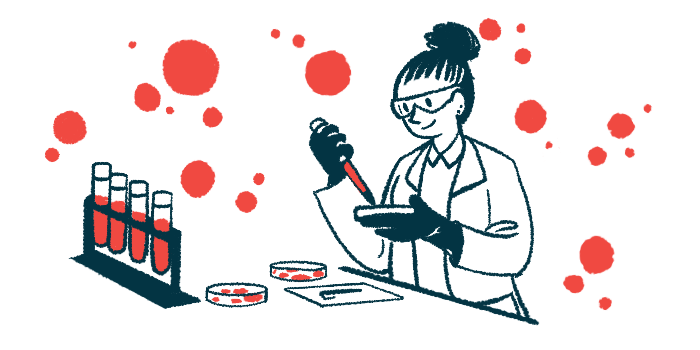Immune cell imbalances seen in patients’ blood, link with severity
Biological therapies may help restore balance in cell levels, study finds
Written by |

Levels of multiple immune cell types were found to be altered in the blood of people with ankylosing spondylitis (AS) relative to healthy individuals in a recent study.
Immune imbalances correlated with measures of disease severity and, in some cases, a balance was restored over time among patients on biological therapies.
“These findings provide novel insights into the specific patterns of immune cell in AS, facilitating the further development of novel biomarkers and potential therapeutic targets for AS patients,” the researchers wrote.
The study, “Mass cytometry identifies imbalance of multiple immune-cell subsets associated with biologics treatment in ankylosing spondylitis,” was published in the International Journal of Rheumatic Diseases.
Ankylosing spondylitis is marked by inflammation in joints of the spine
AS is an autoimmune condition, with disease symptoms characterized by inflammation that mainly affects the joints of the spine. Its exact cause is not known.
A range of different immune cell abnormalities have been observed in AS, where they’re believed to play an important role in the initiation and progression of inflammation.
Scientists in China aimed to create a detailed picture of the specific immune cell types altered in AS, and whether they change over time with treatment.
Immune cell populations in the blood of 34 AS patients and 13 healthy adults were analyzed using a technique called high-dimensional mass cytometry.
In general, the AS patients were considered to have highly active disease. All but two were treated with biological disease therapies, including TNF-alpha inhibitors and IL-17 blockers.
Results, overall, showed that various immune cell subsets were altered in AS patients relative to people without disease, and some of them correlated with AS severity.
Among the immune cell subsets in higher than normal proportions were helper T-cell 17, mucosa-associated invariant T-cells, and classical monocytes, all of which are involved in the release of inflammatory signaling molecules.
These immune cell subsets also tended to positively correlate with clinical indicators of disease severity among the patients, including levels of inflammatory markers and overall disease severity scores, “confirming their potential pathogenic [disease-driving] roles in AS,” the researchers wrote.
Biological therapies may help in regaining some measure of cell balance
Other immune cell types, including a few types of B-cells, non-classical monocytes, and neutrophils, were found at lower than normal levels in these patients. Identified neutrophils previously have been associated with immune suppressing effects, the scientists reported.
To look at changes in immune cell populations over time, samples from a subset of 11 AS patients on biological therapies were examined again either one month (four patients) or three months (seven patients) later.
Results showed that some of the immune irregularities in these patients partially reverted with treatment, although the changes were not statistically significant for T-cell and B-cell populations.
Conversely, imbalances in classical and nonclassical monocyte populations were found to significantly improve over time.
“These findings imply that timely intervention with biological agents can restore these cellular imbalances, leading to improved therapeutic outcomes for AS patients,” the researchers wrote.
Finally, the researchers developed a diagnostic model based on the immune cell subsets altered in the patients’ blood. They found this model was highly accurate for distinguishing patients from healthy people, with an accuracy of more than 98%.
The scientists believe the immune cells identified in the study could ultimately serve as biomarkers for monitoring AS disease activity.
As this work involved a relatively small number of patients, its findings will need to be repeated in larger, long-term studies, the researchers noted. Moreover, “the specific roles of these cell subtypes in the pathogenesis of AS require further in-depth investigation,” they concluded.






